
Jacqui Murray’s recently published book, Against All Odds, third in her prehistory series, was met enthusiastically by the many fans of her writing. It isn’t surprising as “The Crossroads trilogy is set 850,000 years ago, a time in prehistory when man populated most of Eurasia. He was a violent species, fully capable of addressing the many hardships that threatened his survival except for one: future man, a smarter version of himself, one destined to obliterate all those who came before”, as the publisher of the book summarised.

Above the image of what Xhosa might have looked like
This book is impressively researched, in minute detail, including the whistling/singing languages of the world, which made it possible for the author to provide an understanding of the way the protagonists communicate. Even today there are still places in the world, like the remote villages on the Greek mountain at Antia on the island of Evia. The villagers living on the slopes of Mount Ochi communicate by a variety of whistles. The whistles each have distinctive meaning, and the villagers learn this language from early childhood.

Above is the image of the prehistoric forest which was the place of safety Xhosa and her tribe sought during her long journey.
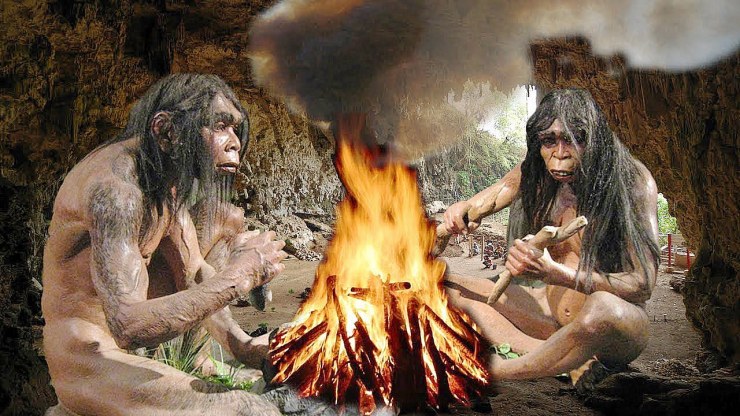
The use of facial expressions, hand gestures and body language is employed here to allow readers to participate in the adventures of Xhosa and her tribe. The author’s quite ingenious idea was to choose as the leader of a tribe, a woman, Xhosa. Scientists now can prove that because of their chromosomes, women are genetically superior to men. They live longer, have stronger immune systems, are better at fighting life-threatening diseases, like cancer, have more stamina than men, and have a higher pain threshold. All the attributes displayed by Xhosa.
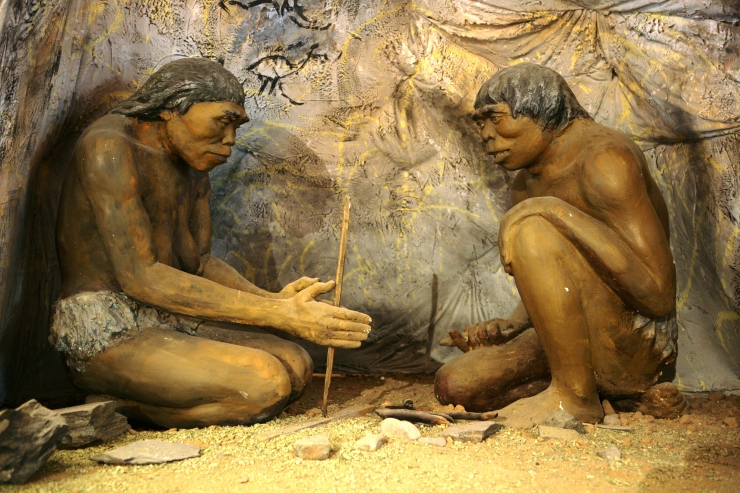
To those interested, one should explain the importance of the disparity in size and usefulness between the two sets of chromosomes we humans have. Each human has two sets of chromosomes, one inherited from the mother and one from the father. Women have two X chromosomes, while men have one X and one Y. The X chromosome contains around 1,000 genes, while the Y chromosome has only about 70, most of which are involved in making sperm. We can discount the Y completely and concentrate on the far more powerful and useful X chromosome. I don’t intend to lapse into a lengthy diatribe on the subject of women’s genetic superiority, but I will just add an important detail, that those two X chromosomes, working together as a back-up system, are the reason for women’s genetic strength, as men do not have one.

. Above is an image of the prehistoric caves
Another interesting idea in the book is off-setting the obvious, for the time, extreme violence with a show of altruism. I think the human race survived and evolved over thousands of years into today’s humans because of the ability to care for others. After all we could not be worse than other Earth dwellers, animals, as they show kindness and compassion to others. There is an engaging tale of Xhosa and her warriors bringing food to the unknown to them group of people, who looked different to her tribe, and even showing them how useful are properly polished stones. The rough stones used by the cave dwellers were not very effective as in use they were prone to cutting their hands.


. Above is an image of prehistoric cave dwellers.
The book refers often to various injuries suffered by the warriors, and the way the pain was dealt with. While they were tough and brutish, they could have had a low pain threshold, or so scientists believe. DNA analysis shows they had a genetic variation linked to the pathway in the body which sends pain signals. Scientist say that these prehistoric people had up to 16% percent higher odds of suffering from persistent pain. It seems that the title Against All Odds is very apt in more senses than one.
 . Above is an image of a giant bear capable of dealing with predators
. Above is an image of a giant bear capable of dealing with predators
Seeing the way the bear was defending her cub and herself from a panther, Xhosa makes a mental note never to hunt the bear. It was less risky to hide in the tall grasses and wait for a passing gazelle to bring her down. Here, I have to point out Xhosa’s exceptional observation skill, essential in her fight for survival. This skill would even allow her to spot that an ordinary-looking dark berry among the bushes, was, in fact, the eye of a hidden predator. Over the millenia this skill continued among native tribes all over the world, like Aborigines, Maori and Native Americans.
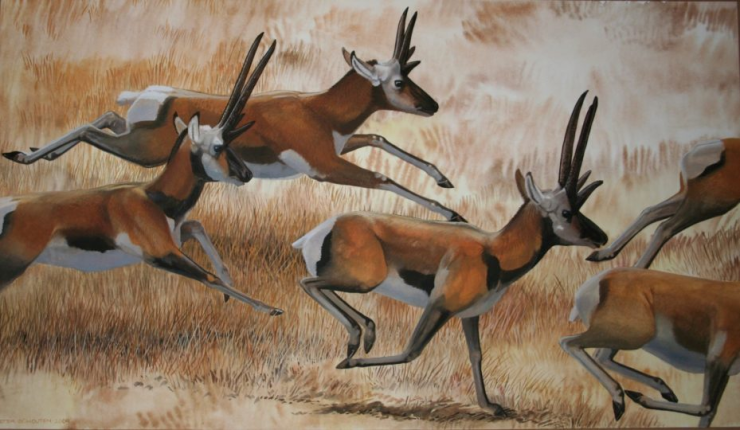
. Above and below are images of prehistoric gazelles.
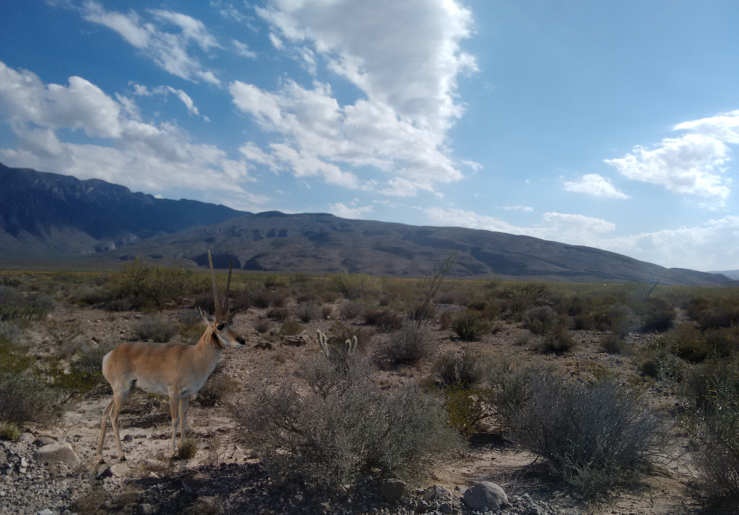

Above an image of the prehistoric bison, who when successfully hunted down would provide Xhosa’s tribe with very welcome meat.
Xhosa developed an extensive knowledge of plants and roots that would help her to treat wounds and, although, she didn’t name them, I think she was using wild garlic. Crushed, and then placed on a leaf, the garlic was then applied to the wound. It would act as a natural antibiotic and kill bacteria that infect wounds and burns. Garlic cures because it penetrates the slimy film that bacteria creates. Today, the garlic remedy is called an ‘ancientbiotic’.
The book correctly highlights the early cooperation between humans and wolves. Both species had the same hunting method, and joining forces was mutually beneficial. My earlier posts covering Jacqui Murray first two volumes of her trilogy, and concentrating on Xhosa’s and her tribe’s relationship with wolves, proved to be extremely popular. Perhaps, because the friendship between wild animals and us, humans, is viewed as special. Wolves, in particular, feature in poetry and songs of many ancient tribes or nations.
 . Above an ancient cave image of human and wolf
. Above an ancient cave image of human and wolf
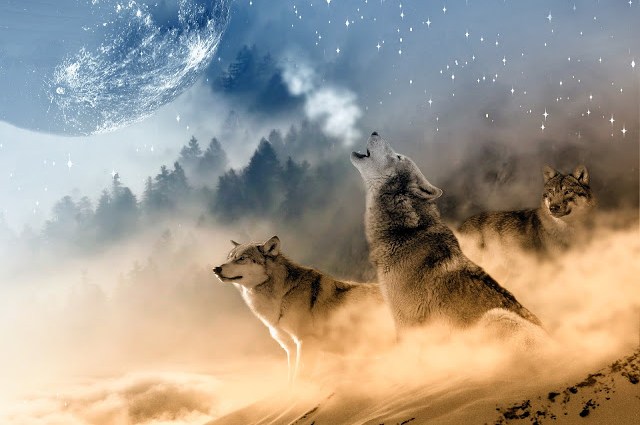
. The wolves howling at the moon are, in my view, expressing longing for the motherland of all of us, the Universe.
I recommend Jacqui Murray’s Against All Odds, because you will end the book with your mind expanded, and the world feeling slightly more manageable which is a great feeling to have, especially now.
What a lovely article about this book. I had no idea of the genetic information–the strength of the female XX. You’ve peaked my curiosity, Joanna. Thanks for taking so much time to get to know Xhosa’s story.
I was looking for social media links I can add to your line on the calendar. If you let me know what they are, I’ll add them tomorrow. Thanks, Joanna.
LikeLiked by 1 person
Thank you, Jacqui. I am glad that you like my review, as it is important to bring out something that is hidden in the story.
I don’t have any social media links, but if you would like to include my blog naturetails.blog on your website, that would be great.
LikeLiked by 1 person
Thank you again for your kind comments.
LikeLiked by 1 person
I’m sure I haven’t read these books but somewhere in the back of my mind…….I’ve read a similar series but can’t put my finger on it. Now, that signals to me that I need to read the Jacqui Murray series. I’ll let you know how I get on but it may be a while as I have at least 3 other books to read before them! Great post Joanna!
LikeLiked by 1 person
Thank you, Ashley.
LikeLiked by 1 person
It could be Jean Auel’s series, Ashley. She wrote the one everyone loved. There’s also the Gears but theirs are more spiritual. My people haven’t yet discovered gods.
LikeLiked by 1 person
Could be Jacqui, I will have a ‘think on it’, but it was at least 15+ years ago and so so much has happened since then! Thank you for commenting here.
LikeLiked by 1 person
Thank you, Ashley.
LikeLike
I really enjoyed your article and this sounds like a really interesting series. I have read Auel’s set and was fascinated by them so am intrigued to try these out.
LikeLike
Thank you very much for your kind comment. Greatly appreciated.
Joanna
LikeLiked by 1 person
Thank you again.
Joanna
LikeLike
I had read and watched a video about the whistling language. But it is amazing to know Xhosa tribes’ facial and hand gestures, genetic superiority of women, altruistic behaviour, garlic remedy and their reasons not to hunt bears. The end with wolves howling at the moon was impressive. It’s a good review of the book by Jacqui Murray that encourages to read it thoroughly. Thanks, Joanna for sharing it🙏
LikeLiked by 1 person
Lovely to be meeting again, Kaushal, you are spoiling me! When I review a book it is always to encourage its readership, especially as Jacqui is a blog-friend. As a good book reviewer, I try to bring out thoughts/ideas hidden in the book and sometimes not even obvious to the author.
A relevant post about the different variety of speech is in my post “Gaby’s Communication”.
Thank you.
Joanna
LikeLiked by 1 person
Thank you, KK. You brought back fond memories from my story. Times were simpler and more complicated back then.
LikeLiked by 1 person
BTW, KK, I was going to visit your blog but can’t find the link. Would you mind sharing it here? Thanks!
LikeLiked by 1 person
And a question for you, Joanna: Where did you get the images? I’m looking for pictures for my book trailer and they look pretty good. I’m having trouble finding public domain images from this timeframe (or Lucy 1.8 mya for that matter). Thanks!
LikeLike
Thank you, Jacqui, for your kind words and gesture. I’m obliged. I’m going to read this book and would like to visit your blog too. Here is my link. https://kaushalkkishore.wordpress.com/
LikeLiked by 1 person
Thank you, Joanna, for taking trouble to reply again. I’m definitely going to read this book and also your post. I also got a response from Jacqui. Thanks again.
LikeLike
Thanks for the link, Kaushal!
LikeLiked by 1 person
Thank you, Jacqui, I take some pictures from Google.
Joanna
LikeLiked by 1 person